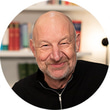- OT
- Professional support
- AOP
- “Change is coming, change that will shape the future of all optometrists over the next decade or two”
The CEO's view
“Change is coming, change that will shape the future of all optometrists over the next decade or two”
Changes that are on the horizon for the profession will shape the future of optometrists’ careers and the AOP’s objectives will support members in navigating these changes, writes Adam Sampson

15 February 2024
Years ago, there was a minor political incident when Oxford University, contrary to all tradition, voted to deny former Premier Margaret Thatcher an honorary doctorate. A few days later, I found myself discussing the vote with one academic, an ancient historian whom I knew hated her with a passion but who, I was surprised to learn, had voted in favour. Pressed as to why, he said that although he personally disliked her, she had only been out of office for a decade, and it was much too soon to assess what her legacy actually was.*
Like historians, CEOs operate according to a different timescale from many others. But whereas historians live in the past, the job of a CEO largely involves living in the future rather than the present. While most of the AOP staff will be focused on the day-to-day, pleasingly delivering record levels of membership, legal support, educational activity and commercial income, for example, in contrast, what I am really interested in are the underlying trends. What do our membership statistics say about what will happen next year, the year after, or in five years’ time? Where are the areas of commercial activity we are growing most quickly and where should we be pressing harder? What does our education attendance and satisfaction ratings tell us about the balance of our provision between face-to-face and virtual, and how should we be factoring this into our future planning? All those things play into the most vital part of the CEO role: plotting the right strategy for the organisation for the coming years.
Before I took on the AOP role, I spent a number of years acting as a consultant for other organisations, specialising in helping them devise strategies for the future. And if there is one thing that experience taught me it is that not everyone is equally good at being able to lift their eyes from the here and now and focus on the likely picture five, 10 or 20 years in the future. For some, the challenges of the immediate are too overwhelming to be able to glimpse what may (or may not) be to come.
Never did I feel this more than when, shortly before Christmas, I joined a consultation event run by the General Optical Council (GOC) to help it begin the process of creating its own strategy for the coming five years. What I wanted to be part of was a clear-eyed discussion of how the delivery of eye care might change over the coming decade or more in the face of the shifting of the tectonic plates of technology, patient demographics and consumer behaviour. What I heard was an unsurprising recitation of the day-to-day challenges currently facing the sector in delivering our mission.
That may not matter. Like all regulators, the GOC is required to hold formal consultation events like this from time to time (it would, by the way, be useful for them to consider consulting the sector before they make their fee increase decisions, given the anger that the recent 6.6% increase has caused among many of our members), and with luck, it will be able to compensate for the somewhat dreary level of sector input with some creative thought of its own.
But, make no mistake, creative thinking is necessary. As I have said, the tectonic plates are on the move and, as this edition of OT discusses, those changes will be critically important in shaping the future of the careers of today’s generation of optometrists. Of course, delivering to our current operational objectives is important in helping our members navigate the challenges they face in their everyday lives. But change is coming, change that will shape the future of all optometrists over the next decade or two, and it is essential that we understand and attempt to shape that change in such a way as to enable our profession to continue to deliver its mission to support the nation’s eye health.
* If anyone out there is thinking this is merely a modern retelling of the fabled remark by Zhou Enlai in the early 70’s that it was far too soon to assess the impact of the French Revolution, the difference here is that that remark was in truth not a statement about the impact of the 1798 Revolution but the student riots in France of 1968.


Comments (1)
You must be logged in to join the discussion. Log in
hilaryandmichael12 June 2024
I have been a practicing optometrist for 40years and have seen what was(for better or worse) the patient practitioner relationship steadily eroded in favour of selling glasses an industrial scale using flashing lights computers and tech that has displaced a person to person relationship that optometrists developed with their clients/customers over many years. This has resulted in a tsunami if clinical and retail complaints the like of which never existed in the " old days". To hear the possible demise of high street optometry gives me hope that eventually we may return to a more personable approach to our business and the replacing of the "flogging" mentality that has prevailed. I would add that a large proportion of my work is dealing with the grief cases that corporate optometry is responsible for with people who refuse to go back to their previous optician because of the dreadful way they have been dealt with
Report Like 28